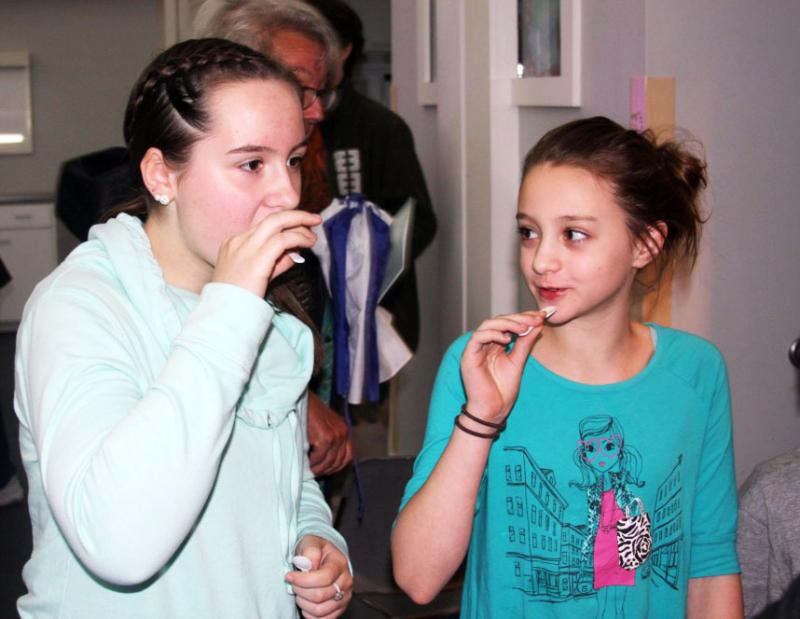Beekeeper, photographer gives suggestions on helping bees thrive in the hive
Wareham's "Bee Weekend" ended with lessons on what happens to drone bees at the end of the summer (it's not good), how the insects communicate through dance and some tips on what people can do to help save the bees.
Photographer and beekeeper Renée Ricciardi presented "Tales from the Hive" Saturday at the Wareham Free Library. The event was done in conjunction with other bee-related activities, including “To Bee or Not to Bee,” a play at John W. Decas Elementary on Friday, put on by Piti Theatre Company of Shelburne Falls. The company is touring New England and preparing to go on a national tour, focusing on honey bee disappearance.
Ricciardi began beekeeping six years ago in Massachusetts and has traveled to Italy twice to observe and photograph beekeeping there, since Italy placed a temporary ban on neonicotinoid pesticides, which can kill or impair bees.
Ricciardi shared many facts about bees through her presentation, including the following:
- Bees are social insects. They divide labor and do cooperative brood care, similar to ants and termites. They communicate by releasing pheromones and through a dance that communicates the distance, location and richness of resources.
- There are three types of honey bee: worker, drone and queen. The worker bees are all female and are responsible for caring for the queen, feeding the brood, cleaning the nest and collecting pollen. The drone bees are male and don’t do much, though some of them mate with the queen bee. The queen bee, twice the size of a worker bee, lays all the eggs in the hive.
- If a queen bee isn’t laying enough eggs, the worker bees kill her by forming a ball around her and vibrating to create intense heat, which kills the queen. Then, they make new queen bees by feeding several larvae royal jelly. The larva that hatches first stings the others so they die before hatching, and she becomes the new queen.
- “Some people say honey is bee vomit, and that’s kind of true,” Ricciardi said. Bees collect nectar in a chamber in their stomachs and later regurgitate it. The nectar is used to create honey. Honey is full of micronutrients and minerals, and even contains antimicrobial properties, making it a healthy sweetener. Eating honey is also known to help with pollen allergies.
- During the winter, bees remain active in the hive. They cluster together to stay warm, keeping the queen bee warm at around 85 degrees. The drones are evicted from the hive during the winter and left to die so they won’t deplete resources throughout the winter.
People who wish to “save the bees” can call their representatives and say they support current bill H.2113, an act to protect Massachusetts pollinators. Ricciardi also suggested becoming a beekeeper, buying honey from local beekeepers, avoiding using products like Roundup to kill weeds and opting out of mosquito spraying.
Ricciardi’s photography of bees in Italy and the United States can be found online at www.reneericciardi.com.

















